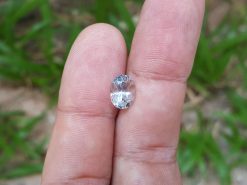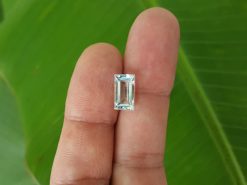Synthetic neon blue beryl

Advanced technology is now able to produce any kind of synthetic neon blue beryl.
Buy natural gemstones in our shop
Of course emerald but also a complete range of other beryl colors such as red or pink bixbite, pale pink morganite, green beryl of any color saturation as well as blue-green (Paraiba) or aquamarine. These varieties of beryl are rare, and the size of natural stones does not exceed 1-3 ct. Therefore, pure samples of standard color weighing over ten carats can truly be categorized as collectible stones.
In addition, the technology enables growth of synthetic neon blue beryls of the colors, which are not typical for natural stones but are more commonly seen in other minerals. Such samples include bright crimson tourmaline-rubellite and deep blue Paraiba tourmaline, which are very much appreciated in jewelers for their incredible rarity and exceptional color appeal.
Such materials are popular among creative jewelry companies that offer new and original design jewelry for discerning buyers.
Comparison of recrystallized beryls and natural beryls
| Properties | Synthetic Beryl | Natural Beryl |
|---|---|---|
| Beryl | Beryl | Beryl |
| Chemical formula | Be3Al2(SiO3)6 | Be3Al2(SiO3)6 |
| Crystal system | Hexagonal | Hexagonal |
| Hardness (Mohs) | 7.5 | 7.5 |
| Density | 2.7 | 2.65-2.70 |
| Refractive index | 1.570-1.579 | 1.565-1.59 |
| Dispersion | 0.014 | 0.014 |
| Inclusions | АB quality: pure stones. CD quality: cracks, fogs and treatment holes, small gas bubbles, which occurred during crystal formation | Fogs, cracks, holes, double-phase inclusions, pyrite, calcite |
| Size of crystals | Length of 40-80 mm, Width of 3-10 mm | Variable |
Synthetic neon blue beryl
















